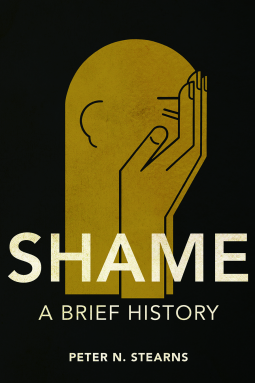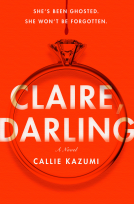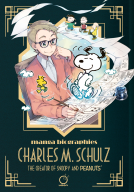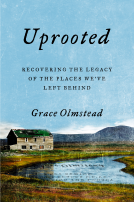
Shame
A Brief History
by Peter N. Stearns
This title was previously available on NetGalley and is now archived.
Send NetGalley books directly to your Kindle or Kindle app
1
To read on a Kindle or Kindle app, please add kindle@netgalley.com as an approved email address to receive files in your Amazon account. Click here for step-by-step instructions.
2
Also find your Kindle email address within your Amazon account, and enter it here.
Pub Date Sep 15 2017 | Archive Date Sep 29 2017
Description
Shame varies as an individual experience and its manifestations across time and cultures. Groups establish identity and enforce social behaviors through shame and shaming, while attempts at shaming often provoke a social or political backlash. Yet historians often neglect shame’s power to complicate individual, international, cultural, and political relationships.
Peter N. Stearns draws on his long career as a historian of emotions to provide the foundational text on shame’s history and how this history contributes to contemporary issues around the emotion.
Summarizing current research, Stearns unpacks the major debates that surround this complex emotion. He also surveys the changing role of shame in the United States from the nineteenth century to today, including shame’s revival as a force in the 1960s and its place in today’s social media. Looking ahead, Stearns maps the abundant opportunities for future historical research and historically informed interdisciplinary scholarship.
Written for interested readers and scholars alike, Shame combines significant new research with a wider synthesis.
Advance Praise
“Stearns is a leading authority in the field of American emotions. The depth and breadth of his knowledge is unrivaled. This is a wonderful book, a careful, in-depth study of one of the most important emotions of the current period.”--Joanna Bourke, author of The Story of Pain: From Prayer to Painkillers
“Shame: A Brief History takes the reader on a breathtaking journey examining shame and shaming practices around the globe and through the ages. Stearns deftly delineates continuities and discontinuities across time and culture, integrating key perspectives from psychology, sociology, anthropology, economics and more. This masterful work is delightfully written and thought provoking, exploring the uses of shame across multiple domains—education, childrearing, penology, international politics, to name a few. For better or worse, shame is with us—past, present, and future."--June P. Tangney, coeditor of Shame in the Therapy Hour
Available Editions
| EDITION | Paperback |
| ISBN | 9780252082924 |
| PRICE | $24.95 (USD) |
| PAGES | 192 |
Links
Featured Reviews
 Librarian 121315
Librarian 121315
The book was a surprise for me because I do not think that I have seen many others trying to understand the emotion of shame, and Stearns does mention that this is a relatively new topic that requires more exploration. However, although humans experience shame, provoke shame on others, and even purposely use it to reach our personal and social goals, we do not know much about shame except that we do not like the feeling. This book is trying to explain how shame may have had a significant force in our history and how it may continue to play an important part in our future. It is a relatively short book and much is said that can be of interest to historians, philosophers, psychologists, and those with a good dose of curiosity.
 Danielle R, Reviewer
Danielle R, Reviewer
3/5 stars.
ebook, 182 pages.
Read from July 11, 2017 to July 20, 2017.
"Shame, as an emotion, has a core meaning, in relating individuals to wider social groups and norms -- real or imagined"
Shame, we have all felt it. However, the majority of people undermine how much it has shaped the world that we interact with everyday. From our sexual behaviour, politics, self-worth, and even our upbringing. What is shame and what makes it different from guilt? For many scholars, this has been a broad and difficult definition to tackle and an even harder topic to discuss in terms of history and its impact on modern society. Peter N. Stearns attempts to address these grey areas with his new book which, is set to be published in September 2017.
"Guilty people apologize and also take steps to avoid repetition. Shame, in contrast, is a more global emotion, which can emerge in response to the same kind of wrong act and violation of standards. It may develop earlier in life than guilt-- guilt requires more cognitive sorting capacity-- but above all it emphasizes self-abasement. It is the self that is at fault, not the commission of the act. This creates greater pain and intensity than guilt. A shamed person feels very bad indeed-- but also makes it more difficult to escape."
The novel opens with the widely debated matter of shame versus guilt and whether or not shame is a primal human emotion. In order to address the history of shame, the author breaks down the novel into four more additional chapters to address each stage in history and how shame is built and progresses through time.
The author draws from a wide-variety of knowledge and cultures to provide excellent examples of shame from across the globe. The most impressionable chapter of the book was by far the last chapter which addressed shame in modern-day USA. The reason I felt this chapter was successful was that it was channelled and concise where as the previous chapters, while interesting and insightful, covered a globally large scope on shame. As a result, I also felt that the author missed out on key topics of shame, specifically with women's sexuality and minorities, both historically and for our present day. While it was mentioned and discussed to a point, surely a large portion of how shame is structured and how it has created our current social and cultural society was built and carried on the backs of shamed women and minorities? Perhaps it is too presumptuous for me to suggest that, however, this book would have benefited from discussing the effects of shame within one country or continent, rather than that of the whole world.
In the last chapter, the author also discusses how technology and social media has given rise to a revival of shame in the modern-day. I also appreciated the references and discussions that the author made in relation to other current researchers on shame, such as Brené Brown.
Overall, this novel is an intriguing look into how shame has shaped our world over the years and how it is currently effecting our everyday lives. The majority of this book is historical in nature but there are also some good sociological and psychological insights as well. I would recommend this book for those looking for an academic read on a topic that is worthy of more exploration.
A big thanks to Netgalley for providing me with an ARC copy of this book in exchange for an honest review.
 catherine h, Reviewer
catherine h, Reviewer
This was an interesting take on shame. I am not a fan of shaming anyone. Kids were brought up on it years ago. grown-ups- parents, relatives, neighbors, teachers, blah blah blahs- all used it to raise us kids and I don't think it did any of us any good. Shaming is horrible. Kid does something that grown up doesn't think is right, talk to the kid and tell them why! Shaming teaches nothing in my opinion. And societal shaming on social media has got to stop. It's just low class bullying and harmful. In my opinion shame only lowers someones self-esteem; keeps them down.
I found this book to be very insightful and recommend it.
 Brice F, Educator
Brice F, Educator
On April 16, 2007, a South Korean national named Seung-Hui Cho went on a shooting spree at Virginia Tech University, killing 32 students and teachers and wounding 17 others before committing suicide. The following day, the president of South Korea made a nationally televised address in which he not only expressed shock and sadness, but also apologized for Cho’s bloody rampage. Cho had spent his entire adult life in the United States and showed obvious signs of mental illness. Everyday Koreans interviewed by the media uniformly expressed shame over what their fellow countryman had done.
The events following the Virginia Tech massacre show that widespread shame, as opposed to individual guilt, remains a powerful emotion even during the 21st Century.
Numerous books have been written on love, anger, lust and hatred, but relatively little scholarly work has been done on shame, in spite of its importance throughout history. That makes the new book, Shame: a Brief History by Peter N. Stearns a welcome addition to the University of Illinois Press, History of Emotions series.
Stearns distinguishes shame from guilt. For the author, guilt is an emotion linked to an individual act and can usually be assuaged by expressing remorse and making restitution. Shame, on the other hand, involves community-wide condemnation and often results in permanent psychic injury, and sometimes suicide.
Stearns theorizes that shame began when early humans abandoned hunter-gathering for agricultural societies. Shame helped maintain social order as large numbers of people began to congregate in a single area. His thesis appears reasonable, but there is really no archeological evidence to support it.
The author is on firmer ground when he discusses the role of shame in ancient Middle Eastern and Asian cultures, pointing out frequent episodes of shaming in the Bible. He also notes the large number of sayings attributed to Confusions dealing with shame. Stearns asserts that in these premodern cultures, shaming was not as devastating an experience as in today’s societies. Individuals were often taken back into their communities after a suitable time had elapsed and remorse was publicly expressed.
One of the more interesting sections of Shame: A Brief History details the decline of shaming as an acceptable behavior, beginning, in earnest, during the early 19th Century. It was during this period that liberal reformers attacked many established institutions including slavery and child labor. These reformers began making the modern argument that shame is a harmful emotion and that the public shaming of individuals is counterproductive.
As the 20th Century began, shame appeared to be on the decline, perhaps even on the verge of disappearance. But Stearns shows that shame as a motivating force was still being actively used in a number of subcultures even as shaming as being condemned in wider society. Coaches continued to publicly humiliate under-performing athletes. Likewise, teaches often subjected poor students to the ridicule of their peers.
But nowhere was shame more firmly established than in the military, when the fear of being branded a coward caused many soldiers to take foolhardy risks. The major theme to emerge from the book is that the fear of shame is a more powerful motivator than the act of shaming itself.
To me, the most compelling part of the book is the chapter dealing with the revived acceptance of shame beginning in the 1970s. Political conservatives advocated a return to public shaming in response to what they saw as the excesses of the 1960s. At the same time, those on the political left began using shame to attack those who were considered racist, misogynist or homophobes.
Stearns opposes, for the most part, this return to the culture of shaming. He argues that any gains are outweighed by the long-term harm to individuals and damage to the structure of democracy and free speech. He concludes, predictably, with a call for more research into shame.
I wish he had dealt more with the role that the internet and social media is having on the development of shame. Now, people can hide behind a pseudonym and lead large-scale attacks on individuals for real or imagined faults with no consequences to those doing the shaming.
I also take exception to the author’s claim that shame is an unequally human emotion. He asserts that animals can’t feel shame because they have no sense of hierarchy. Stearns clearly has not grown up around dogs. Anyone who has, can tell you that canines do experience shame. Animal psychologists have done many studies showing that dogs have a strong sense of their hierarchical position within their pack.
These quibbles aside, I can recommend Shame: A Brief History to anyone interested in how emotions have developed throughout time.
 Nicole L, Educator
Nicole L, Educator
One of the themes of my life recently, as in the past year, has been shame. While it's something I have absolutely experienced, and still do at times, it's been mostly about how other people in my life deal with theirs. So I saw Peter N. Stearns' Shame: A Brief History, and I knew I wanted to read it.
This historical document of shame goes all the way back in the written record to what we know about shame, from the Greek and Roman view all the way up through pre-modern and the present time. It's important to understand the background of a topic, so I was grateful for these chapters, and I was interested in the historical perspective for sure. However, I was mostly in it for the meat of the burger, which was contemporary views of shame and, if possible, answers for ways to deal with it. While my latter question wasn't answered by this book, my first one was.
There were a few points I took out of this book that I found to be on point, and the first was the decline in shame as Western society took on a more individualistic cultural identity followed by an uptick when social media came into the picture. Shame is a much more powerful tool in a collectivist society, as it is dependent upon group norms. In the United States, as we have seen more people move to a much more urban and suburban landscape, shaming as a point of punishment in general society declines. It's needs a group to serve it, such as in school, where shame still often takes hold. Social media has changed that, with a tweet having the ability to go viral in just mere minutes. That being said, this book does a great job of differentiating between guilt and shame, and how they function as separate entities. I took a great deal away from this book intellectually, and I found it to be moderately easy to read while still providing in-depth and interesting information.
This was a more historical examination of shame rather than a psychological examination, which was what I was expecting, but I found it to be an important piece to read and add to my arsenal as I go about digging deeper into what shame is in our present society (which for me is a Western, urban, young culture) from a psychological perspective.
Excellently written, and a great intellectual dive into shame. Shame is such an integral part of the human experience, and this book fills a gap in the current literature. History is often looked at as a series of events and social experiences, but the nuances are often left by the wayside. Shame is one of those nuances that changes not only from culture to culture, but individual to individual, and can be wielded as a mighty weapon to influence and control others. A must-read for those who wish to dive deeper.
 Reviewer 416886
Reviewer 416886
I’d never given much thought to the history of emotions so when I came across this “work of emotions history” I was intrigued.
“This study seeks to sum up most of the existing historical findings, with related insights from other disciplines, while also extending historical analysis particularly around developments in the United States over the past two centuries.”
In exploring the history of shame, the author touches on its psychology and includes references to sociology, anthropology and philosophy. Socrates, Plato, Aristotle, Confucianism, Christianity, Islam and Hinduism are all mentioned.
“In China, it has been estimated that up to 10 percent of Confucius’s writings center around the importance of shame.”
This book differentiates between guilt and shame throughout history, contrasting guilt-based and shame-based societies. It focuses on shame and shaming in a number of contexts, both public (from stocks to Jerry Springer) and private. Anticipatory, reintegrative and punitive shame are addressed, with examples given from around the world. The focus, however, is on Western society.
“Precisely because shame takes root in a fear that others will turn away from us and find us wanting, we keep our shame to ourselves - we fear that revelation will actualize the very rejection we worry about.”
I found the information connecting shame and the criminal justice system particularly interesting. The role that parents, schools, religion, sports, politics and the media have played over time in redefining shame were also addressed. The disparity that has existed as a result of gender, race, culture, sexuality, disability, poverty and social status were discussed. The anonymity of the internet along with the history and current prevalence of slut shaming and fat shaming were also mentioned.
One of my pet peeves, that I mostly come across in textbooks, is when the author spends a significant amount of time outlining what will be explored later in the chapter or subsequent chapters, or recapping what’s already been explained. When I first picked up this book I gave up before I reached 10% because I was so frustrated by constantly reading passages that included:
“The third major section of this chapter explores”
“The overall goal of the chapter”
“As Chapter 3 and 4 explore”.
It got to a point where it felt like their main purpose was to add to the word count and I came close to discarding the book a second time because of it. When the actual information was provided I found it quite interesting, despite some sections that were very dry. It definitely had that textbooky feel throughout the book (it’s published by a university, after all) but when I came across passages that weren’t telling me what I was going to read about later I enjoyed them.
I disagree with the author when they claim that shame is only a human emotion, that animals “lack appropriate awareness of hierarchy”. If you’ve ever caught a dog doing something they know they shouldn’t have been, then I think you’d also beg to differ.
The footnotes, which include references, are quite extensive, making up over 10% of the book.
Content warnings include mention of death by suicide, mental health and sexual assault.
Thank you to NetGalley and University of Illinois Press for the opportunity to read this book. I’m rounding up from 3.5 stars.











